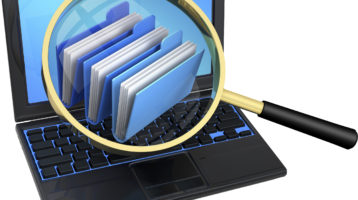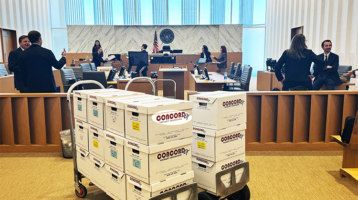eDiscovery Best Practices By Doug Austin (CloudNine)
Having worked with a client recently that was looking for some guidance at the outset of their case, it seemed appropriate to revisit this topic here.
CALL CONCORD today (800) 246-7881
When a case is filed, several activities must be completed within a short period of time (often as soon as the first seven to ten days after filing) to enable you to assess the scope of the case, where the key electronically stored information (ESI) is located and whether to proceed with the case or attempt to settle with opposing counsel. Here are several of the key early activities that can assist in deciding whether to litigate or settle the case.
Activities:
- Create List of Key Employees Most Likely to have Documents Relevant to the Litigation: To estimate the scope of the case, it’s important to begin to prepare the list of key employees that may have potentially responsive data. Information such as name, title, eMail address, phone number, office location and where information for each is stored on the network is important to be able to proceed quickly when issuing hold notices and collecting their data. Some of these employees may no longer be with your organization, so you may have to determine whether their data is still available and where.
- Issue Litigation Hold Notice and Track Results: The duty to preserve begins when you anticipate litigation; however, if litigation could not be anticipated prior to the filing of the case, it is certainly clear once the case if filed that the duty to preserve has begun. Hold notices must be issued ASAP to all parties that may have potentially responsive data. Once the hold is issued, you need to track and follow up to ensure compliance. Here are a couple of posts from 2012 regarding issuing hold notices and tracking responses.
- Interview Key Employees: As quickly as possible, interview key employees to identify potential locations of responsive data in their possession as well as other individuals they can identify that may also have responsive data so that those individuals can receive the hold notice and be interviewed.
- Interview Key Department Representatives: Certain departments, such as IT, Records or Human Resources, may have specific data responsive to the case. They may also have certain processes in place for regular destruction of “expired” data, so it’s important to interview them to identify potentially responsive sources of data and stop routine destruction of data subject to litigation hold.
- Inventory Sources and Volume of Potentially Relevant Documents: Potentially responsive data can be located in a variety of sources, including: shared servers, eMail servers, employee workstations, employee home computers, employee mobile devices, portable storage media (including CDs, DVDs and portable hard drives), active paper files, archived paper files and third-party sources (consultants and contractors, including cloud storage providers). Hopefully, the organization already has created a data map before litigation to identify the location of sources of information to facilitate that process. It’s important to get a high level sense of the total population to begin to estimate the effort required for discovery.
- Plan Data Collection Methodology: Determining how each source of data is to be collected also affects the cost of the litigation. Are you using internal resources, outside counsel or a litigation support vendor? Will the data be collected via an automated collection system or manually? Will employees “self-collect” any of their own data? If so, important data may be missed. Answers to these questions will impact the scope and cost of not only the collection effort, but the entire discovery effort.
These activities can result in creating a data map of potentially responsive information and a “probable cost of discovery” spreadsheet (based on initial estimated scope compared to past cases at the same stage) that will help in determining whether to proceed to litigate the case or attempt to settle with the other side.
So, what do you think? How quickly do you decide whether to litigate or settle?


